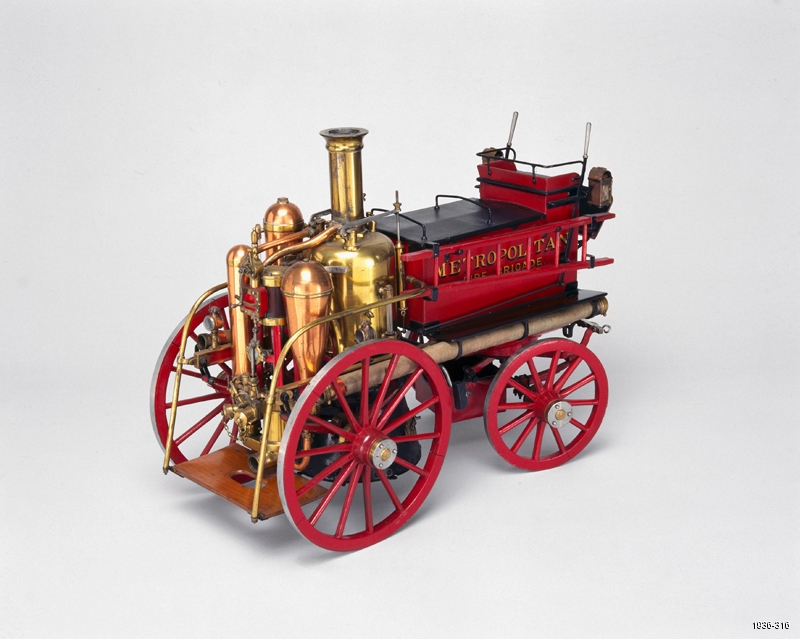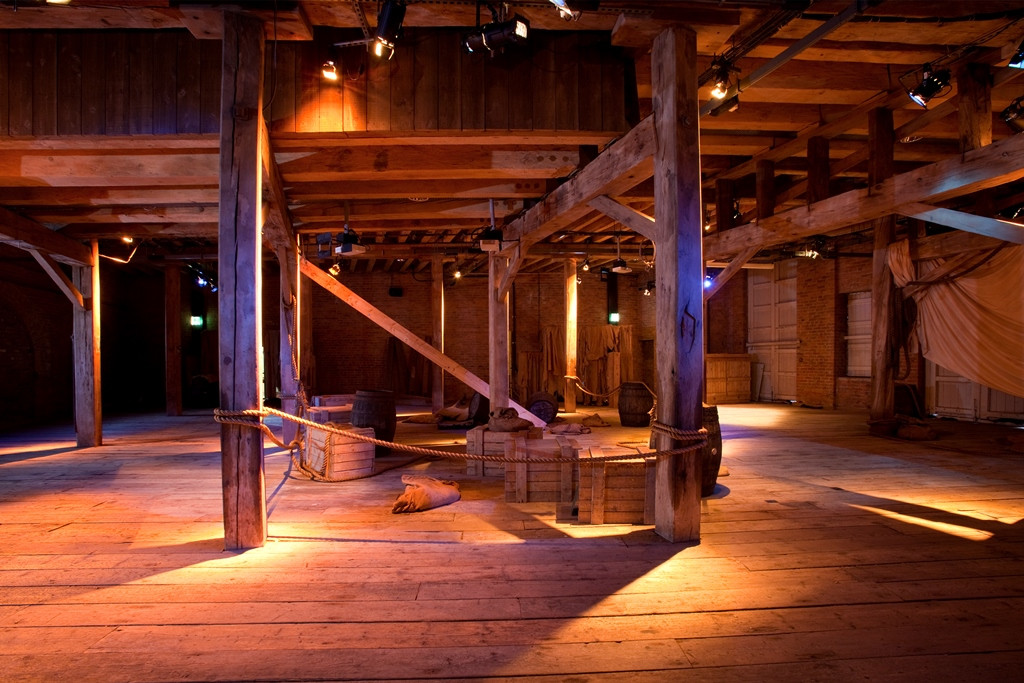Fire engulfed the site, leaving destruction in its wake. The Manchester Guardian reported that it was “a fire which for magnitude and destruction of property is one of the largest that has ever occurred in this city”.
At 1am on the 23 May 1866, a fire began in Number 2 Warehouse. The building was stuffed with highly flammable goods, including turpentine, oil, soap and soda-ash. A strong north-easterly wind fed the flames and within an hour, the blaze had taken hold. Explosions could be heard within the building as the combustible contents blew up.

Science Museum Group © The Board of Trustees of the Science Museum
Fire brigades from all over Manchester and Salford were called to the scene, but despite their brave efforts, they could not prevent the fire from spreading to a second building. Number 1 Warehouse was full with stores of cotton, jute, madder, grain and flour, providing yet more fuel for the inferno. The flames became so intense that the fire could be seen as far afield as Ashton-under-Lyne, prompting its fire brigade to rush to the aid of the Manchester crews. At its peak, the heat became so overwhelming that it destroyed the coats of the fire-fighters on the front line.
As the fire overtook Number 1 Warehouse, concern mounted for the safety of Number 3 Warehouse – the building we know today as our 1830 Warehouse. The buildings were connected by a bridge, and the flames threatened to spread across the gangway. The world’s first railway warehouse could well have burned to the ground on that night, were it not for the prompt actions of the fire crew. They connected 10 hand pumps to a large water tank on the top floor of the building and worked tirelessly to dampen down the heat.

Science Museum Group © The Board of Trustees of the Science Museum
By 7.30am, the fire was under control. Warehouse 3 was saved from the blaze, but the other two buildings were completely gutted. One wall fell during the fire, on top of a member of the Manchester fire brigade, Henry Clarke. He escaped with only cuts and bruises, despite being buried under the rubble for several minutes. The risk of further collapses led to the immediate demolition of the ruins as soon as the fire was spent.
In the short-term, the destruction at the site must have come as a bitter blow to the railway’s proprietors. The London and North Western Railway was not insured for the destruction of its property or the commodities it was storing. The cost of the damage came to an eye-watering £150,000. In the longer term, however, the removal of the two warehouses opened up new opportunities for the railway. Ultimately, the northern edge of the site was remodelled, with the railway company building a second viaduct into the station to increase its capacity for goods traffic.